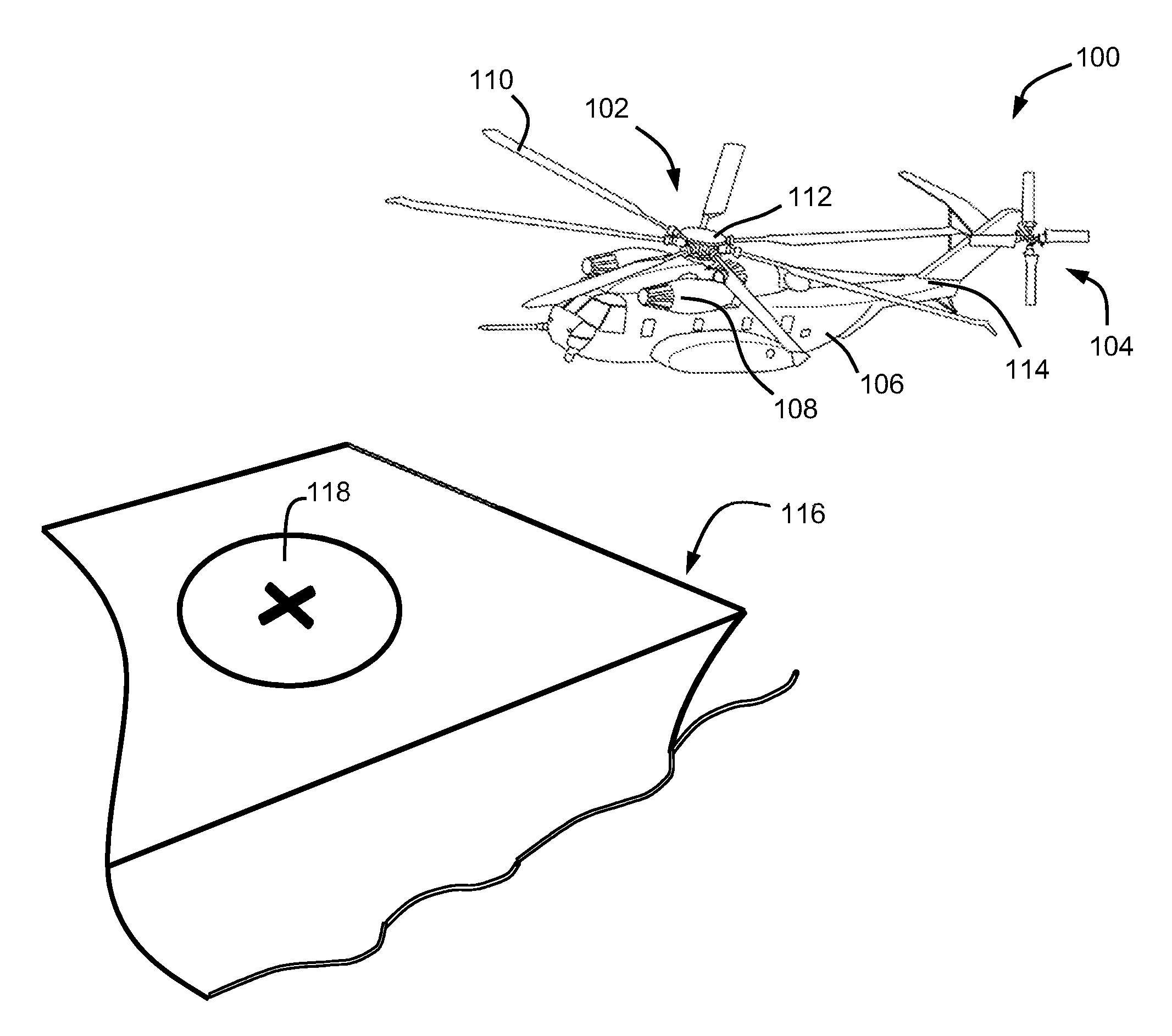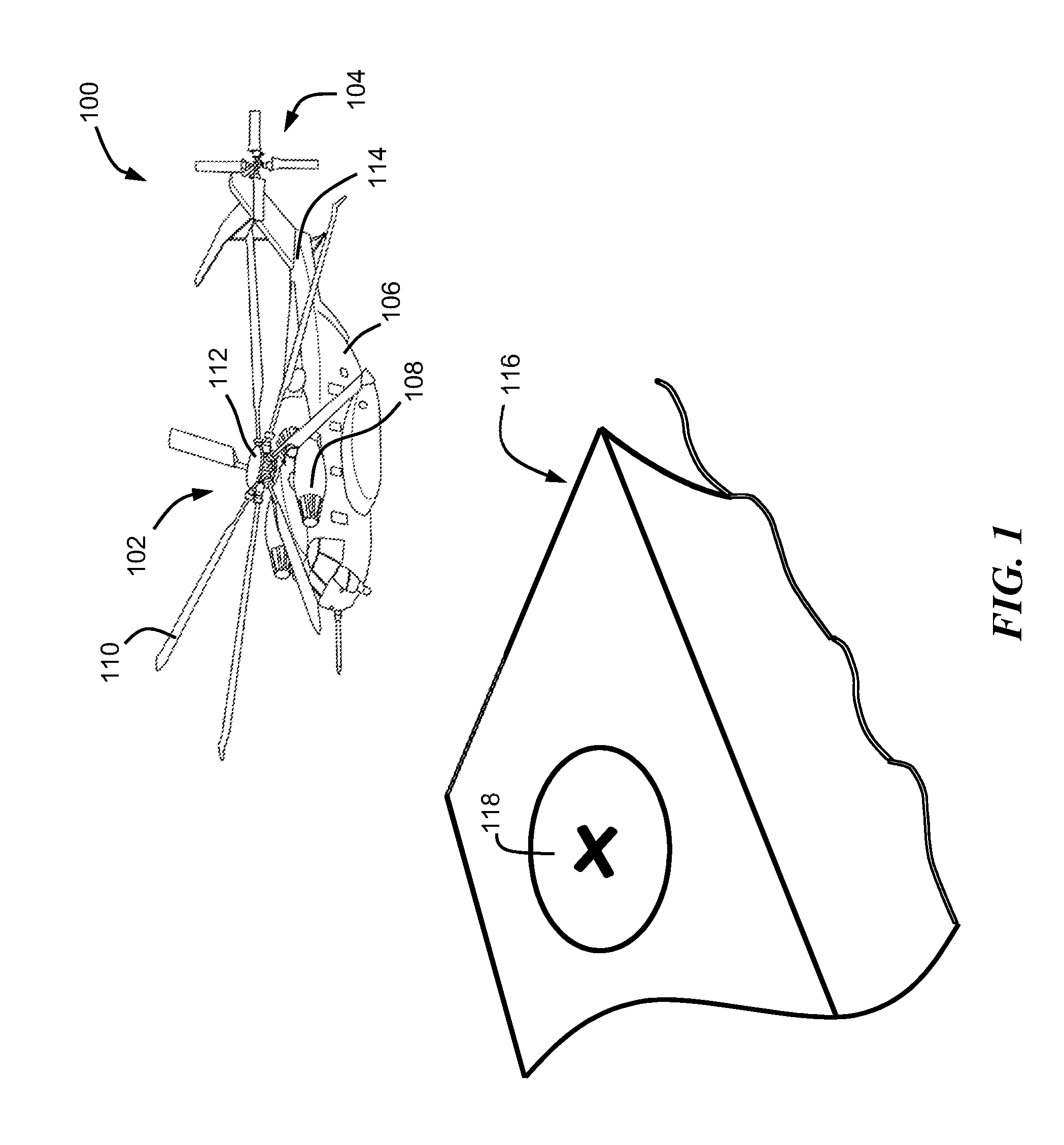Lidar-based shipboard tracking and state estimation for autonomous landing
a technology of autonomous landing and tracking system, applied in the field of rotorcraft, can solve the problems of unequipped ships, high cost of tracking system, and multitude of challenges of autonomous uavs
- Summary
- Abstract
- Description
- Claims
- Application Information
AI Technical Summary
Benefits of technology
Problems solved by technology
Method used
Image
Examples
Embodiment Construction
[0028]Embodiments describe a system and method for online tracking and state estimation of a platform or ship deck at various sea states using LIDAR data to enable safe landing of an autonomous unmanned aerial vehicles (“UAV”). The embodiments utilize one or more algorithms that utilize a multi-hypothesis Bayesian filter which leverages real-time LIDAR scanner data of ship deck measurements from potentially dense point cloud data.
[0029]Referring now to the drawings, FIG. 1 illustrates an autonomous UAV rotary wing aircraft or helicopter 100 (hereinafter “autonomous UAV 100”) which is moving into a position above a ship deck 118 on a ship 116 in accordance with an embodiment of the invention. In other embodiments, autonomous UAV 100 can be approaching a ship deck (or platform) or other surface of a sea-based structure at sea. Aircraft 100 has a main rotor assembly 102, which is driven about an axis of rotation, via a main gearbox, by one or more engines 108. Main rotor assembly 102 i...
PUM
 Login to View More
Login to View More Abstract
Description
Claims
Application Information
 Login to View More
Login to View More - R&D
- Intellectual Property
- Life Sciences
- Materials
- Tech Scout
- Unparalleled Data Quality
- Higher Quality Content
- 60% Fewer Hallucinations
Browse by: Latest US Patents, China's latest patents, Technical Efficacy Thesaurus, Application Domain, Technology Topic, Popular Technical Reports.
© 2025 PatSnap. All rights reserved.Legal|Privacy policy|Modern Slavery Act Transparency Statement|Sitemap|About US| Contact US: help@patsnap.com



